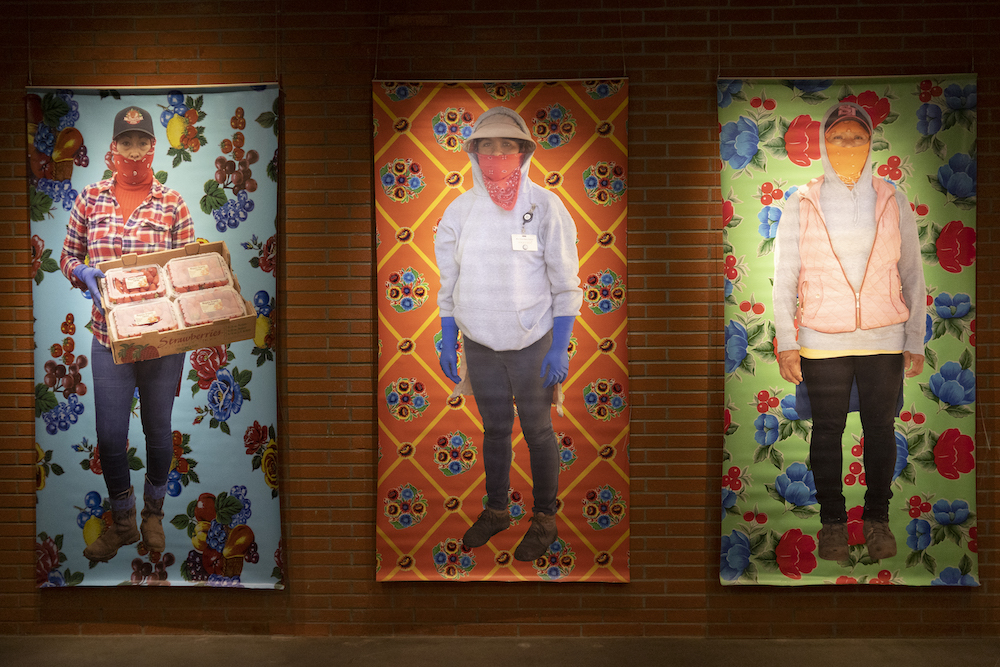Rodolfo “Corky” Gonzales, Chicano Movement Leader, founder of the Crusade for Justice, and Poet once wrote: I am the masses of my people and I refuse to be absorbed. I am Joaquín. The odds are great, But my spirit is strong, My faith unbreakable, My blood is pure. These words are ever present in the Cheech and MexiCali Biennial, “Land of Milk & Honey.” With works by over 40 artists, the exhibition, organized by Ed Gómez, Luis G. Hernández, Rosalía Romero, and April Lillard-Gómez, deconstructs perceptions of California being that place of opportunity where one can have a better way of life. These artists, wounded with the blessing to create, access their inner most visceral aesthetic language and speak to themes of agriculture in California and Mexico in a vein similar to John Steinbeck’s interpretation of the region as amoral and untrustworthy. The folk included in the exhibition are unafraid to choose from the menu of creative expressionistic modes and interrogate unapologetically, while also inviting dialogue about injustice.
A three-panel piece by Janet Diaz entitled Sangre Sudor y Amor: Hunger for the American Dream (2018) depicts three life size individuals of Mexican descent in field worker clothing standing and staring heroically at viewers, as if challenging perceptions pertaining to social invisibility; the exploitive, privileged, white gaze is forced to reckon with the humanity of the persons illustrated. The backgrounds of each panel are adorned with a repetitive fruit design which indirectly reminds viewers of the resilient human hands working in the fields. Diaz, a first generation Mexican American Chicana artist, uses art as a platform to speak to issues pertaining to migration, immigration, labor rights and identity. Her work deals with similar themes addressed by past African American artist, Jacob Lawrence, in his Great Migration Series (1940-41).
Using the tradition of Neo-Muralism, Fernando Corona’s piece Field Trip (2023) builds on two historical legacies—the Mexican Muralists Rivera, Orozco and Siqueiros, and Wall of Respect (1967), a mural created by the visual artists in OBAC (Organization of Black American Culture) on the South Side of Chicago that sparked the mural movement in the United States. Corona, like his predecessors, infuses political content in this work; he intentionally paints colors seen by his laboring folk and depicts the same items picked in the fields by his people—fruits and vegetables.
Ultimately, “Land of Milk and Honey” celebrates artistic genius and is a sobering reminder of the contradictions inherent when the colonizing, tainted governmental systems of democracy and capitalism seek to coexist.


